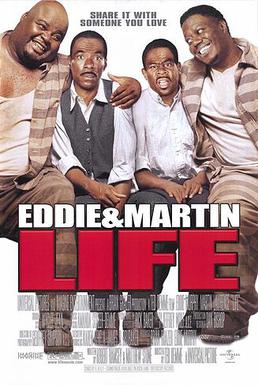
The protagonist of this film is not
a woman, but is a male. Throughout the film, there are very few scenes which
involve women. In this film, there are only two women shown throughout the
whole entire one hundred and nine minute film. There is no question that the
women are just placed in the movie to be “objects for the male gaze.” When the
women are shown, they are portrayed as a woman who will have sex for money, and
as a woman who cheats on her husband. The woman who portrays a prostitute is of
African American ethnicity, and the woman who portrays the adulterer is of Caucasian
ethnicity. For the time period of the movie, which is the 1930’s and 40’s in
the scenes that they are in, I would say that both of these women fit into
racial stereotypes. White women in this
time period had more of a curvaceous body type, along with black women. This film
does not pass the Bechdel Test, as it does not feature two or more women, who
talk to each other about something other than men.
This movie is about two men who
discover the meaning of life while spending theirs in prison. In the first
scene with the two main characters, they encounter a meeting with several of
the inmates, who introduce themselves and tell their stories of how they got in
prison. As the scene unfolds and the men talk amongst each other, they do it in
such a way that the man with the scariest or most gruesome story of how he got in
prison is idolized or considered a “bad ass,” by the other prisoners. I would
say that they did a good job of avoiding perpetuating an unhealthy body ideal
for men. Of the thirty prisoners that are shown throughout this film, only one
is obese, and he is the prisoner who is idolized for committing such a terrible
crime. In this film, there are only two men of color shown: white and black. All
of the prisoners are black, and the warden and man in charge of watching over
the prisoners are white. These definitely fit into the racial stereotypes of
the time period as racism was still very active. This film however, does not
include men in non-stereotypical roles. They do a good job of not celebrating
offensive racial, ethnic, and cultural stereotypes. In the scenes that do show
racism occurring, they show how bad racism is, and each of the individuals who
did racist acts, were punished during the movie. There are several scenes in
which they show the struggle of what black men went through in the forties, and
they do so in a way that draws sympathy (pathos) from the audience. The protagonist
in this film is not gay, bisexual, or transgender. But they do portray two gay
men in the film. Both are reduced to stereotypes though, because we do know
that men in prison tend to prefer a different sexuality when they are going to
be in prison for a long time. The protagonist in this film does not have a disability,
but they do include one character that does have a disability. This characters story
line is limited to their disability. In the two scenes that that this character
is shown, he is incapable of speaking and when he does, it is very quiet stuttering.
He is a talented baseball player that with the help of the protagonist in this film
is able to be granted a pardon to play in the major leagues. This film is written, directed, and produced by all men. The only of these that is of color, is the producer, Eddie Murphy, who is a well-known and highly respected actor as well. None of these however, are of the lesbian, gay, bisexual, or transgender sexuality. Nor do any of these men have disabilities. Although this movie lacks diversity, and would appear to be a very simple black and white film, it does have comedy and a touching showing of a “bromance” type of relationship that keeps the viewer interested. I consider this a classic movie, one that I can watch over and over again without wanting to shoot myself. This film receives a “C” as I could only check four of the boxes on the REP Test. I rate this film one directors cut.


No comments:
Post a Comment